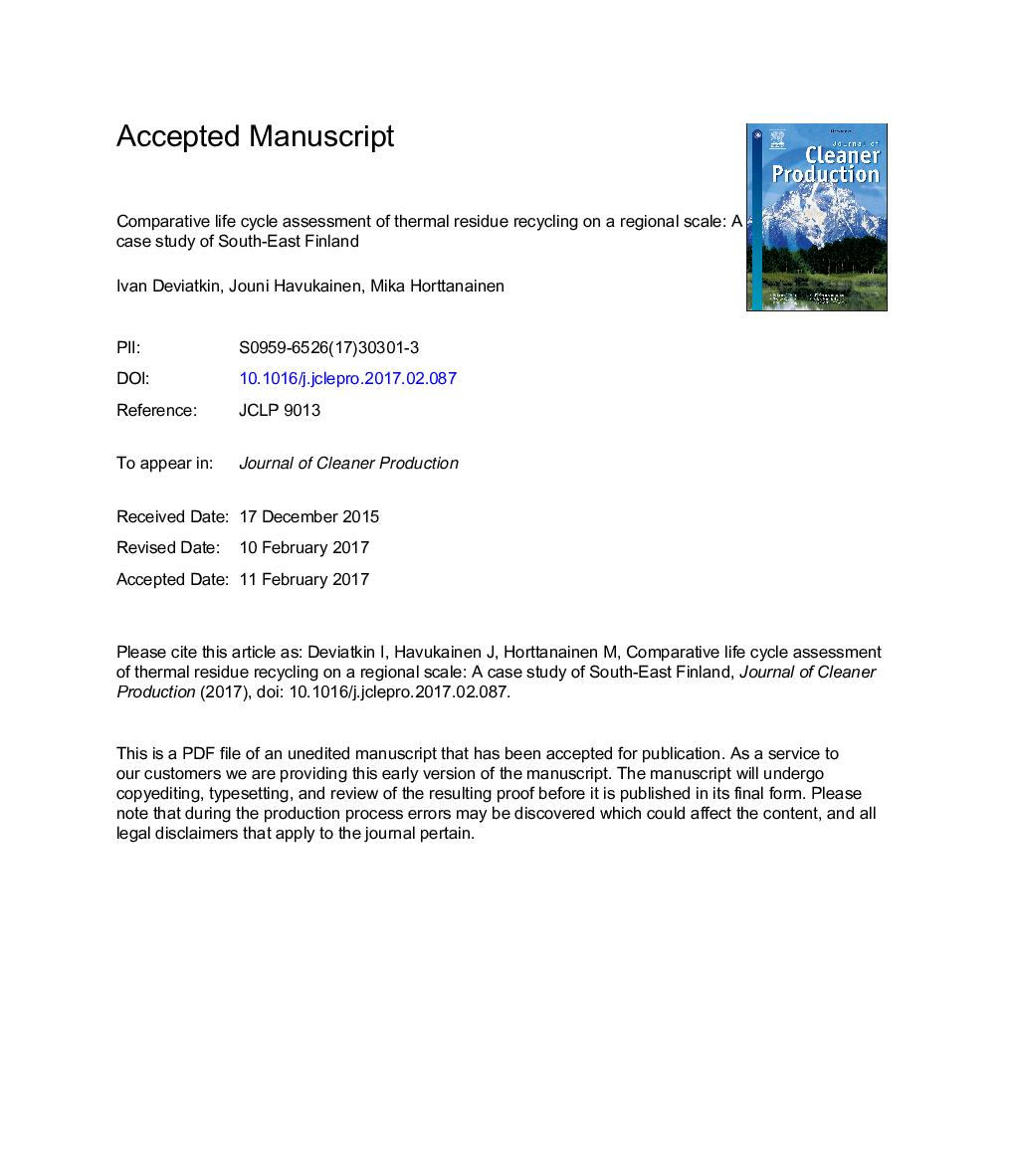| کد مقاله | کد نشریه | سال انتشار | مقاله انگلیسی | نسخه تمام متن |
|---|---|---|---|---|
| 5480732 | 1522104 | 2017 | 44 صفحه PDF | دانلود رایگان |
عنوان انگلیسی مقاله ISI
Comparative life cycle assessment of thermal residue recycling on a regional scale: A case study of South-East Finland
ترجمه فارسی عنوان
ارزیابی چرخه زندگی مقدماتی بازیافت باقی مانده های حرارتی در مقیاس منطقه ای: مطالعه موردی فنلاند جنوب شرقی
دانلود مقاله + سفارش ترجمه
دانلود مقاله ISI انگلیسی
رایگان برای ایرانیان
کلمات کلیدی
ارزیابی چرخه حیات، خاکستر پایین خاکستر پرواز اقتصاد مدرن، مدیریت زباله، تجزیه و تحلیل سیستم،
موضوعات مرتبط
مهندسی و علوم پایه
مهندسی انرژی
انرژی های تجدید پذیر، توسعه پایدار و محیط زیست
چکیده انگلیسی
The aim of the study was to quantify the environmental impact of four alternative recycling methods of thermal residues generated within the case study area chosen. Overall, 90 combinations of 13 scenarios were included in the study and a sensitivity analysis was performed. The recycling methods that were assessed included forest fertilization and neutralization, landfill construction, road construction, and road stabilization. Other scenarios focused on the regional optimization, distribution of heavy metals under L/S ratio 10Â L kgâ1, and uncertainty related to the determination of heavy metals at levels that were lower than the analytical limits of quantification. The alternative scenarios were studied using a comparative life cycle assessment method with the system expansion. The results indicated the extent to which each recycling method was superior to landfilling within non-toxic impact categories, with the average reduction in the environmental impact being 10-30% when the residues were utilized for forest fertilization, road construction, and stabilization, and by 3-12% when the residues were utilized for landfill construction. The majority of the impact resulted from avoiding the need to landfill the residues since this could be achieved even at a zero substitution rate in the majority of the cases. In terms of the toxic impact categories, the use of the residues for road construction purposes had a more positive impact on the environment that the alternative uses, resulting in a reduced ecotoxicity potential and carcinogenic human toxicity potentials of 30% and 40% respectively, and an increase in non-carcinogenic human toxicity potential of only 4%. Most of the toxic impact was the result of Ba, V, Sb, Co, Cr, and Zn leaching. In addition, the study concluded that a lack of the leaching data below the limits of quantification was significant for the overall toxic results of the study.
ناشر
Database: Elsevier - ScienceDirect (ساینس دایرکت)
Journal: Journal of Cleaner Production - Volume 149, 15 April 2017, Pages 275-289
Journal: Journal of Cleaner Production - Volume 149, 15 April 2017, Pages 275-289
نویسندگان
Ivan Deviatkin, Jouni Havukainen, Mika Horttanainen,
